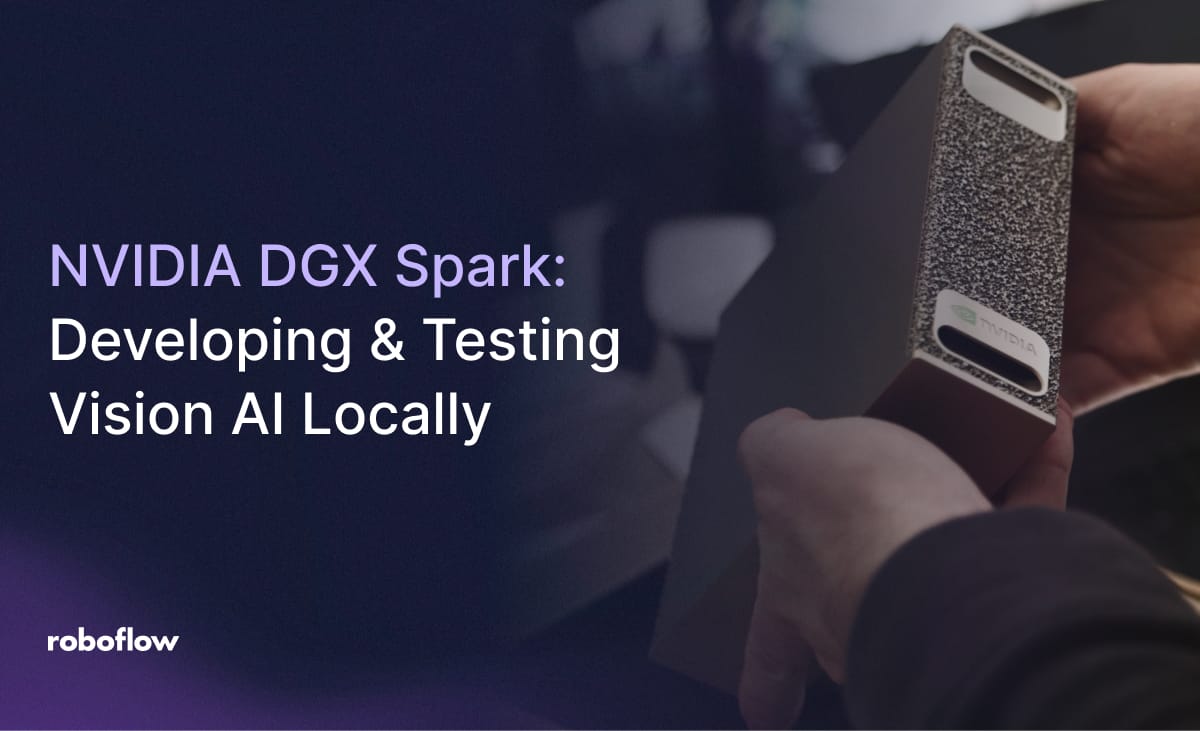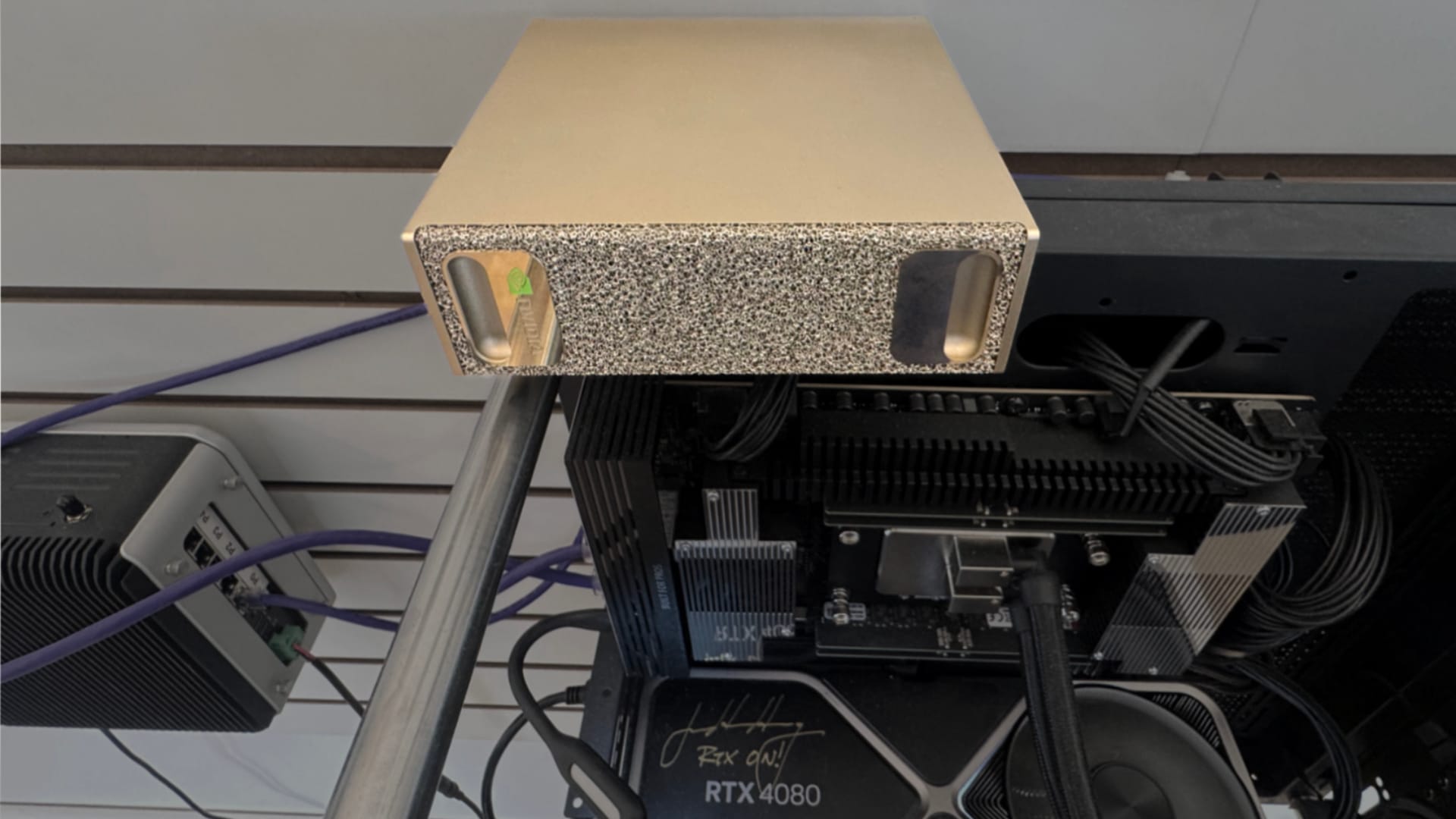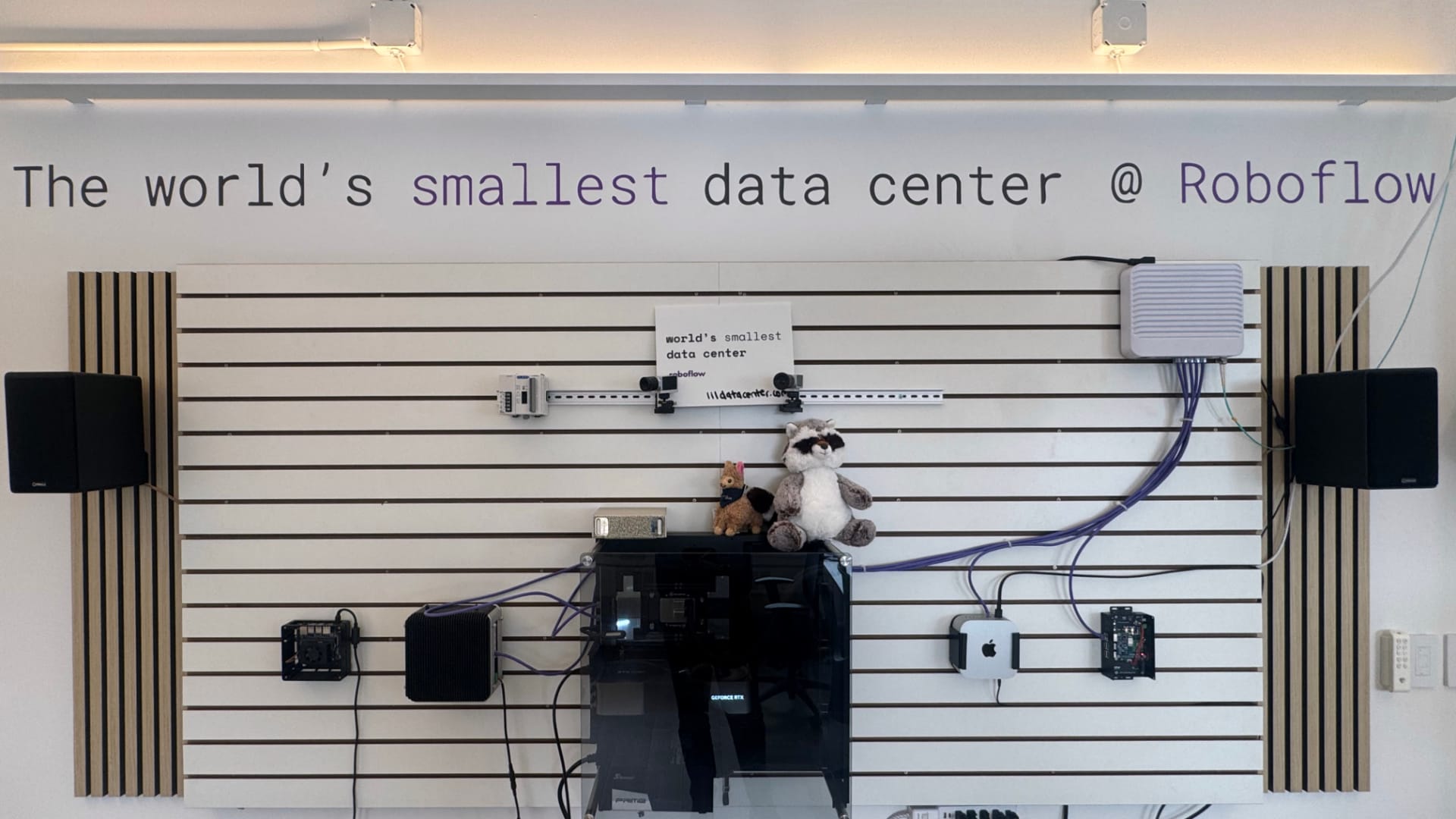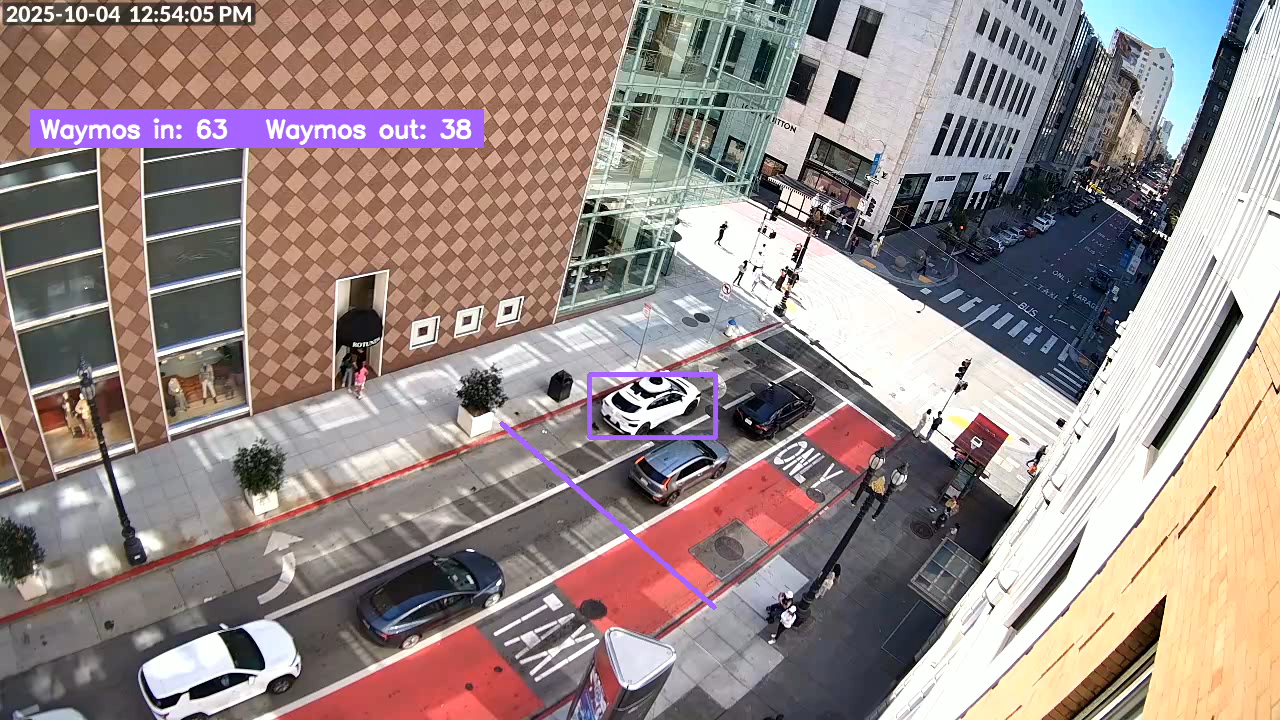
On Wednesday, October 15, 2025, NVIDIA will start shipping the DGX Spark, a next-generation hardware platform for developers to create and test AI applications locally. Built on the NVIDIA Grace Blackwell GB10 Superchip, NVIDIA DGX Spark combines NVIDIA GPUs, CPUs, 128GB of unified memory and ConnectX networking in a small form factor that fits on a desk.
At Roboflow, we received the DGX Spark for early evaluation and compatibility testing. The DGX Spark is rated to run inference on AI models with up to 200 billion parameters and fine-tune models of up to 70 billion parameters locally. With those numbers in mind, we were excited to test it and explore how it fits into the computer vision development process.

Exploring the DGX Spark as a Vision AI Platform
To get to know the DGX Spark, we decided to build a prototype visual AI application capable of counting the number of Waymo vehicles driving by our office in downtown San Francisco.
Our Waymo-Counting Vision AI App Running on NVIDIA DGX Spark
We chose this project to familiarize ourselves with the DGX Spark for a few key reasons:
- A Test of the Development Pipeline: Developing an app for a visual analysis task, like counting vehicles, served as a perfect opportunity to experiment with the DGX Spark’s ability to fit into the computer vision development process.
- Model Training from Scratch: To differentiate Waymo vehicles from other cars, we needed to fine-tune a new computer vision model from scratch. This allowed us to understand how the DGX Spark handles the projects that require working with fine-tuned models.
- Real-Time Performance: Analyzing a live camera feed gave us the chance to test the DGX Spark’s ability to power real-time computer vision applications.
Creating and Testing the Waymo-Counting App
NVIDIA bills the DGX Spark as "the world's smallest AI supercomputer." Well, it just so happens Roboflow has a testing lab that we affectionately call "the world’s smallest datacenter." Naturally, our first move was to install the DGX Spark in our lab, a space designed for developing vision AI applications at the edge.

To fine-tune a computer vision model to identify the Waymo vehicles, we used footage from a live camera feed aimed at a nearby intersection. We labeled a few still images from this footage, then used them to train a custom model using Roboflow’s RF-DETR, a state-of-the-art object detection model designed for edge deployments. We chose RF-DETR for this project because it delivers best-in-class performance in terms of latency and accuracy when compared to other object detection models.
With our custom Waymo-detecting vision model in hand, we built a quick application to run inference on the live camera feed, track individual Waymo vehicles, and update a counter when each vehicle crossed a specific line. We accomplished this using Workflows, a tool for building computer vision applications. For this Waymo-counting application, we leveraged a few of the pre-made blocks available in Workflows, like those for ByteTracker and Line Counting.
Given its compact size, the DGX Spark may serve as the engine for local development and fine-tuning, but also for testing your AI applications right at your desk or in a lab. To test the Waymo-counting application, we installed Roboflow Inference on the DGX Spark. Roboflow Inference is an open-source framework that helps you deploy computer vision models and applications on your own hardware or cloud infrastructure. This allowed us to deploy the custom vision model and start running inference on the real-time camera feed. As you can see in the video above, the model successfully counted dozens of Waymo vehicles.

Developing and Testing More Powerful Models Locally
Using AI to count specific vehicles was just a fun test case, but similar techniques can be employed for AI applications in smart cities, urban planning projects, and many other situations where you need a computer to see and interpret the physical world.
As more teams leverage computer vision applications, the need for fast development and testing tools grows. With its big performance in a compact size, the NVIDIA DGX Spark delivers an exciting new option for developers as they build and deploy the next generation of visual applications.
Cite this Post
Use the following entry to cite this post in your research:
Matvei Popov, Patrick Deschere. (Oct 13, 2025). Hands-On with NVIDIA DGX Spark: World’s Smallest Supercomputer Meets World’s Smallest Datacenter. Roboflow Blog: https://blog.roboflow.com/nvidia-dgx-spark-for-vision-ai/
